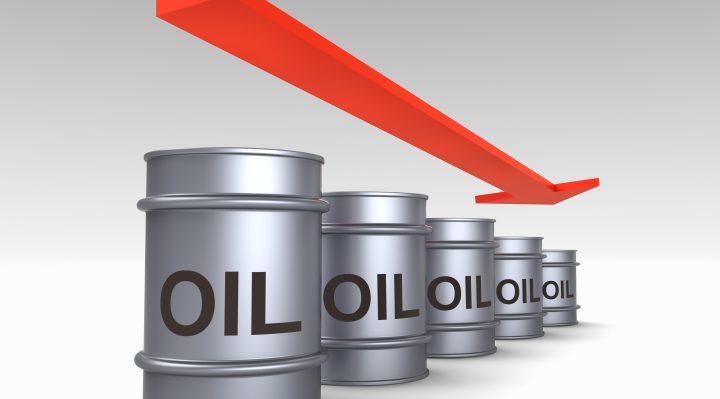
Oil prices plunged nearly 5% in Wednesday’s trading after the U.S. Energy Information Administration’s weekly inventories report showed crude oil inventories rise for a second consecutive week.
The unexpected rise in the crude inventory came after analysts had expected a decline. The U.S. Energy Information Administration reported a 1.6 million barrel increase in the week ending August 9th against market forecasts for a 2.8 million barrel decline.
The EIA did report gasoline inventories decreasing by 1.4 million barrels against an expected 30,000 increase. There was also a decline in distillate inventories by 1.9 million barrels versus expectations for an increase of 990,000 barrels. However, the deeper drawdowns in distillates and gasoline were not enough to prevent oil prices tumbling by almost 5%.
Having hit an intraday low of $54.07 a barrel, crude oil rallied to be 3.38% lower at time of writing, with a barrel trading at $55.19. Brent Oil suffered similar losses, sinking to $58.33 a barrel, before rallying to $59.48, a daily decline of 2.92%.
Trade War Effect on Oil
Today’s losses erased the gains made in oil over the last few days, as optimism mounted over an end to the US-China trade war. Oil prices spiked by more than 5% after the US said it would delay a 10% tariff on Chinese exports. However, the ongoing trade war between the world’s two largest economies has hit global confidence and diminished demand for energy stocks in particular.
Chinese oil refiners and oil traders have been staying away from crude cargoes from the US over the last few months as the trade war intensified. This, despite the fact that China does not have any tariffs imposed on oil from the US.
Disappointing economic data from China is also adding pressure on crude, underlining demand concerns. Chinese industrial output rose by 4.8% year-over-year last month, slowing from the 6.3% rise posted in June. Chinese retail sales increased by 7.6% on an annual basis. However, this was a decline from the 9.8% recorded in June and well below market expectations for an 8.5% increase.
Markets Disappointed
The bearish inventory data both disappointed and surprised markets, who had expected a decline. Until last week’s surprise US crude inventory rise, there were seven successive weeks of declines in crude oil stockpiles. The 50 million barrels drawn over the seven-week period comes at a time when energy is expected to see runaway demand. The US is in peak summer, where long-distance driving and increased air conditioning use normally see crude oil stockpiles post strong declines.
Until Wednesday, crude oil increased 11% since Aug. 7, its strongest four-day rally since December 2016. Brent oil increased by nearly 9% in the same period. All eyes are now on the US-China situation for further clues on oil’s next move.



